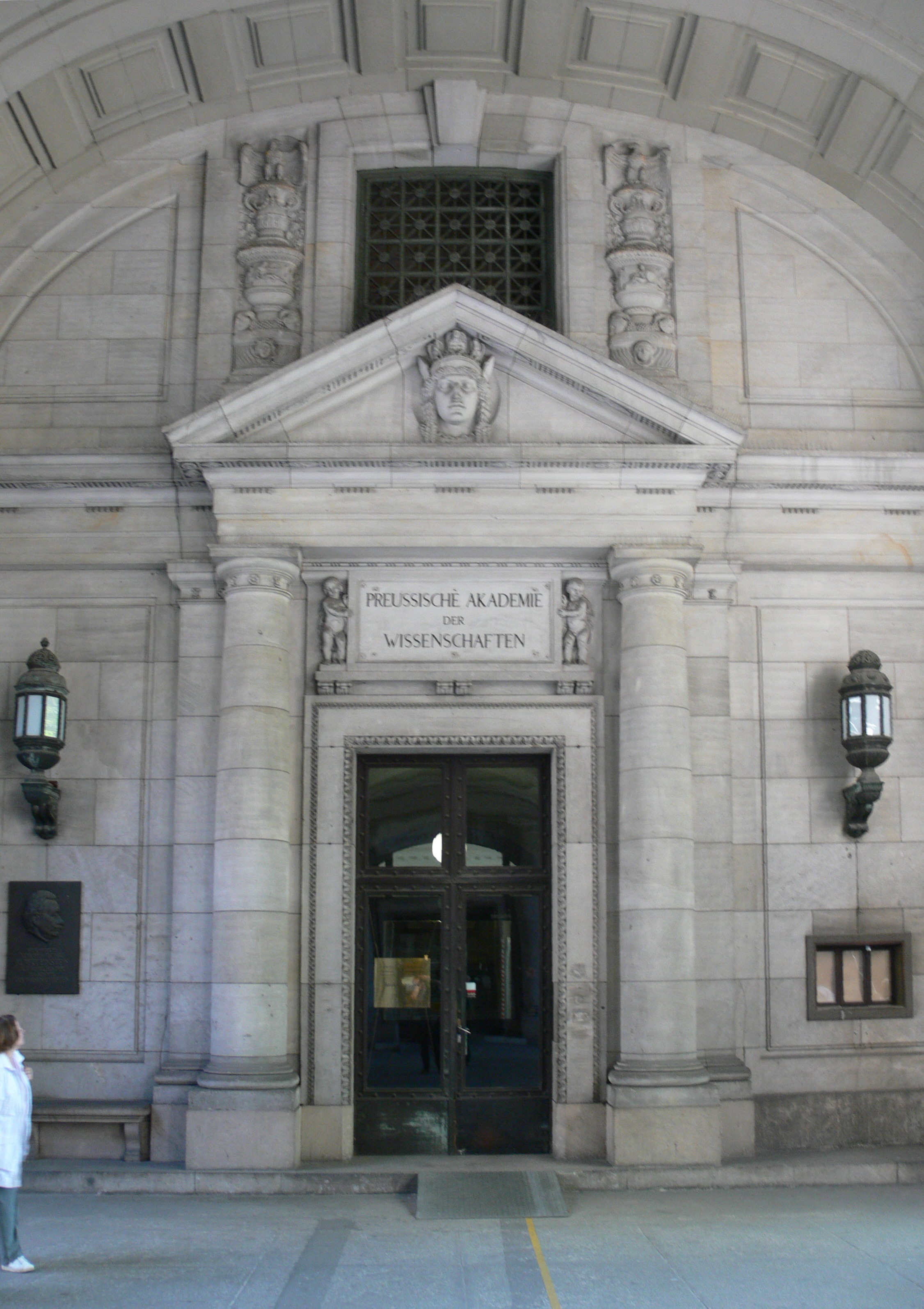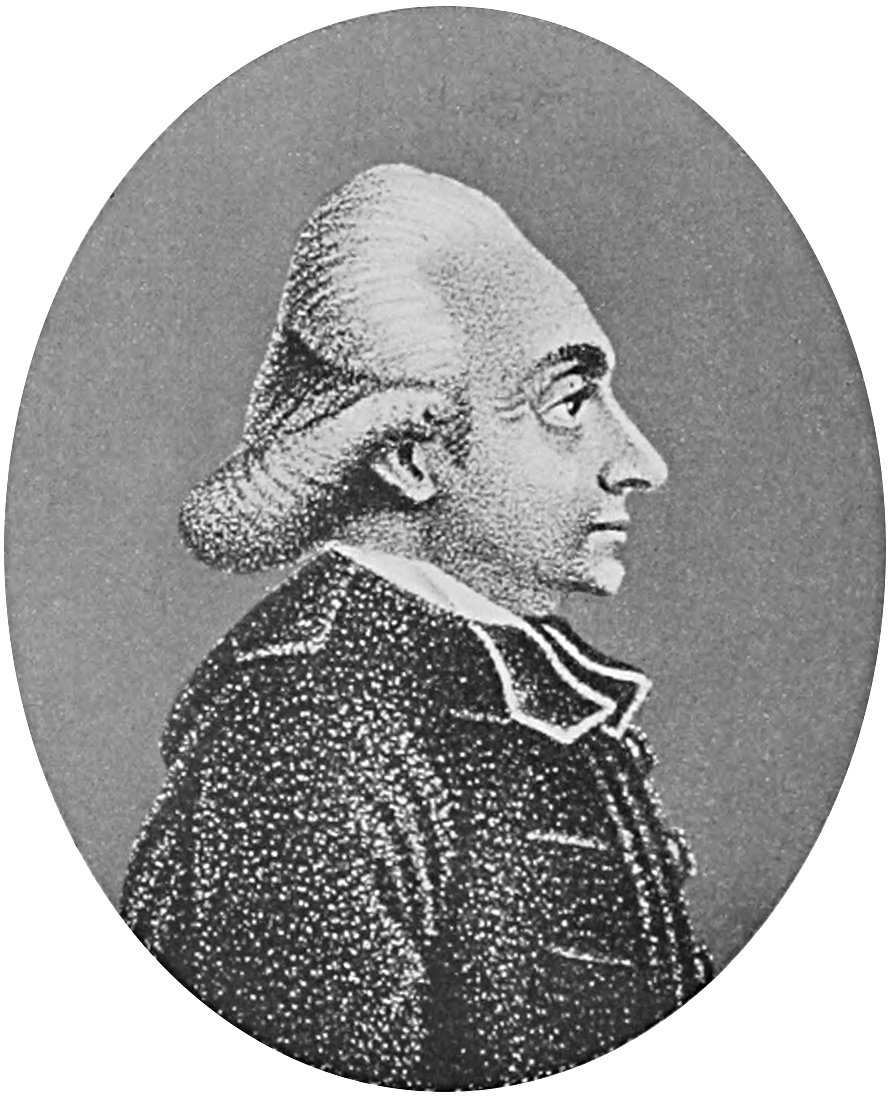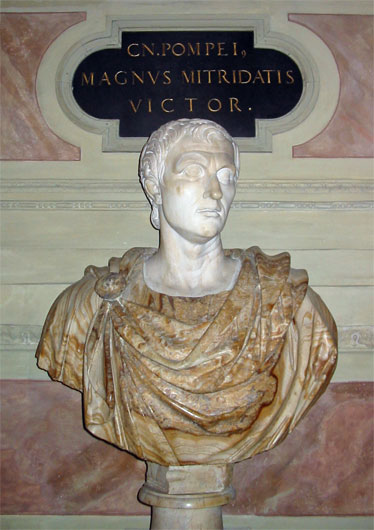|
Axia Gens
The gens Axia, also spelled Axsia, was a plebeian family at Rome during the final century of the Republic and the beginning of the Empire. The gens does not appear to have been particularly large or important, although at least some of the family were reasonably wealthy.''Dictionary of Greek and Roman Biography and Mythology'', vol. I, p. 448 ("Axia Gens"). Branches and cognomina None of the Axii mentioned in history bear a surname; the only cognomen found in inscriptions is ''Naso'', originally referring to someone with a prominent nose.Eckhel, ''Doctrina Numorum Veterum'', v. 148. Members * Quintus Axius M. f., a senator in 73 BC. He was a wealthy man from Reate, and friend of both Cicero and Varro, who made him a protagonist of his ''De Re Rustica''. His grand villa at Colli sul Velino can be seen today. * Marcus Gallius Axianus, son of Cicero and Varro's friend who was adopted into the Gallia gens. * Lucius Axius L. f. Naso, ''triumvir monetalis'' in 71 BC, probably to b ... [...More Info...] [...Related Items...] OR: [Wikipedia] [Google] [Baidu] |
Plebs
In ancient Rome, the plebeians (also called plebs) were the general body of free Roman citizenship, Roman citizens who were not Patrician (ancient Rome), patricians, as determined by the capite censi, census, or in other words "commoners". Both classes were hereditary. Etymology The precise origins of the group and the term are unclear, but may be related to the Greek, ''plēthos'', meaning masses. In Latin, the word is a grammatical number, singular collective noun, and its genitive is . Plebeians were not a monolithic social class. Those who resided in the city and were part of the four urban tribes are sometimes called the , while those who lived in the country and were part of the 31 smaller rural tribes are sometimes differentiated by using the label . (List of Roman tribes) In ancient Rome In the annalistic tradition of Livy and Dionysius of Halicarnassus, Dionysius, the distinction between patricians and plebeians was as old as Rome itself, instituted by Romulus' a ... [...More Info...] [...Related Items...] OR: [Wikipedia] [Google] [Baidu] |
Epistulae Ad Atticum
''Epistulae ad Atticum'' (Latin for "Letters to Atticus") is a collection of letters from Roman politician and orator Marcus Tullius Cicero to his close friend Titus Pomponius Atticus. The letters in this collection, together with Cicero's other letters, are considered the most reliable sources of information for the period leading up to the fall of the Roman Republic. The letters to Atticus are special among Cicero's works in that they provide a candid view into his personal character — containing confession, frank self-revelation, and a record of his moods from day to day, without alteration. Traditionally spanning 16 books, the collection features letters from 68 to 44 BCE. A notable absence of early references to these particular letters suggest that they may not have been published until the middle of the first century CE, significantly later than Cicero's other letters and quite some time after the deaths of both Cicero (43 BCE) and Atticus (32 BCE). A ma ... [...More Info...] [...Related Items...] OR: [Wikipedia] [Google] [Baidu] |
Thomas Robert Shannon Broughton
Thomas Robert Shannon Broughton, FBA (; 17 February 1900 – 17 September 1993) was a Canadian classical scholar and leading Latin prosopographer of the twentieth century. He is especially noted for his definitive three-volume work, ''Magistrates of the Roman Republic'' (1951-1986). Life and career Broughton was born in 1900 in Corbetton, Ontario. He attended Victoria College at the University of Toronto. There he received a B.A. in 1921 with honors in classics. He earned his M.A. in 1922. After studying at the University of Chicago, he was made a Rogers Fellow at Johns Hopkins University, where he received a Ph.D. in Latin in 1928, having studied under the famed ancient historian Tenney Frank (1876-1939). He began his teaching career at Victoria College, Toronto. Broughton would go on to teach at Amherst College, Bryn Mawr College (1928-1965) and, later, serve as George L. Paddison Professor of Latin at the University of North Carolina at Chapel Hill (1965-1971), where th ... [...More Info...] [...Related Items...] OR: [Wikipedia] [Google] [Baidu] |
Wilhelm Dittenberger
Wilhelm (William) Dittenberger (August 31, 1840 in Heidelberg – December 29, 1906 in Halle (Saale)) was a German philologist in classical epigraphy. Life Wilhelm Dittenberger was the son of the Protestant theologian Wilhelm Theophor Dittenberger. After attending school in Heidelberg and Weimar (then directed by Hermann Sauppe), he studied classical philology at Jena from 1859 and transferred to Göttingen in 1861, where he was reunited with Hermann Sauppe and received his doctorate at the beginning of 1863 for a work on the Athenian ephebes. From autumn of that year, he taught at the Göttingen Gymnasium while he completed his habilitation on Sallust at the University of Göttingen. Initially, Dittenberger remained a schoolteacher, becoming a teacher at the Joachimsthalsches Gymnasium in Berlin in 1865, at the Rudolstadt Gymnasium from 1867, and at the gymnasium in Quedlinburg from 1873 to 1874. In 1874 he was appointed Professor of Classical Philology at the University of Hall ... [...More Info...] [...Related Items...] OR: [Wikipedia] [Google] [Baidu] |
Berlin-Brandenburg Academy Of Sciences And Humanities
The Berlin-Brandenburg Academy of Sciences and Humanities (german: Berlin-Brandenburgische Akademie der Wissenschaften), abbreviated BBAW, is the official academic society for the natural sciences and humanities for the States of Germany, German states of Berlin and Brandenburg. Housed in three locations in and around Berlin, Germany, the BBAW is the largest non-university humanities research institute in the region.BBAW Introduction retrieved 06-21-2012. The BBAW was constituted in 1992 by formal treaty between the governments of Berlin and Brandenburg on the basis of several older academies, including the historic Prussian Academy of Sciences from 1700 and East Germany's Academy of Sciences of the German Democratic Republic from 1946. By this tradition, past members include the Brothers Grimm, Wilhelm von Humboldt, Wilhelm and Alexander von Humbold ... [...More Info...] [...Related Items...] OR: [Wikipedia] [Google] [Baidu] |
Corpus Inscriptionum Latinarum
The ''Corpus Inscriptionum Latinarum'' (''CIL'') is a comprehensive collection of ancient Latin inscriptions. It forms an authoritative source for documenting the surviving epigraphy of classical antiquity. Public and personal inscriptions throw light on all aspects of Roman life and history. The ''Corpus'' continues to be updated in new editions and supplements. CIL also refers to the organization within the Berlin-Brandenburg Academy of Sciences and Humanities responsible for collecting data on and publishing the Latin inscriptions. It was founded in 1853 by Theodor Mommsen and is the first and major organization aiming at a comprehensive survey. Aim The ''CIL'' collects all Latin inscriptions from the whole territory of the Roman Empire, ordering them geographically and systematically. The earlier volumes collected and published authoritative versions of all inscriptions known at the time—most of these had been previously published in a wide range of publications. The descr ... [...More Info...] [...Related Items...] OR: [Wikipedia] [Google] [Baidu] |
Theodor Mommsen
Christian Matthias Theodor Mommsen (; 30 November 1817 – 1 November 1903) was a German classical scholar, historian, jurist, journalist, politician and archaeologist. He is widely regarded as one of the greatest classicists of the 19th century. His work regarding Roman history is still of fundamental importance for contemporary research. He received the 1902 Nobel Prize in Literature for being "the greatest living master of the art of historical writing, with special reference to his monumental work, '' A History of Rome''", after having been nominated by 18 members of the Prussian Academy of Sciences. He was also a prominent German politician, as a member of the Prussian and German parliaments. His works on Roman law and on the law of obligations had a significant impact on the German civil code. Life Mommsen was born to German parents in Garding in the Duchy of Schleswig in 1817, then ruled by the king of Denmark, and grew up in Bad Oldesloe in Holstein, where his fat ... [...More Info...] [...Related Items...] OR: [Wikipedia] [Google] [Baidu] |
William Smith (lexicographer)
Sir William Smith (20 May 1813 – 7 October 1893) was an English lexicographer. He became known for his advances in the teaching of Greek and Latin in schools. Early life Smith was born in Enfield in 1813 to Nonconformist parents. He attended the Madras House school of John Allen in Hackney. Originally destined for a theological career, he instead became articled to a solicitor. Meanwhile, he taught himself classics in his spare time, and when he entered University College London carried off both the Greek and Latin prizes. He was entered at Gray's Inn in 1830, but gave up his legal studies for a post at University College School and began to write on classical subjects. Lexicography Smith next turned his attention to lexicography. His first attempt was ''A Dictionary of Greek and Roman Antiquities'', which appeared in 1842, the greater part being written by him. Then followed the ''Dictionary of Greek and Roman Biography and Mythology'' in 1849. A parallel '' Dictionary of ... [...More Info...] [...Related Items...] OR: [Wikipedia] [Google] [Baidu] |
Dictionary Of Greek And Roman Biography And Mythology
The ''Dictionary of Greek and Roman Biography and Mythology'' (1849, originally published 1844 under a slightly different title) is an encyclopedia/biographical dictionary. Edited by William Smith, the dictionary spans three volumes and 3,700 pages. It is a classic work of 19th-century lexicography. The work is a companion to Smith's ''Dictionary of Greek and Roman Antiquities'' and '' Dictionary of Greek and Roman Geography''. Authors and scope The work lists thirty-five authors in addition to the editor, who was also the author of the unsigned articles. The other authors were classical scholars, primarily from Oxford, Cambridge, Rugby School, and the University of Bonn, but some were from other institutions. Many of the mythological entries were the work of the German expatriate Leonhard Schmitz, who helped to popularise German classical scholarship in Britain. With respect to biographies, Smith intended to be comprehensive. In the preface, he writes: Much of the value ... [...More Info...] [...Related Items...] OR: [Wikipedia] [Google] [Baidu] |
Joseph Hilarius Eckhel
Joseph Hilarius Eckhel (13 January 1737 – 16 May 1798) was an Austrian Jesuit priest and numismatist. Biography Eckhel was born at Enzersfeld, in Lower Austria. His father was farm-steward to Count Zinzendorf, and he received his early education at the Jesuits' College, Vienna, where at the age of fourteen he was admitted into the order. He devoted himself to antiquities and numismatics. After being engaged as professor of poetry and rhetoric, first at Steyr and afterwards at Vienna, he was appointed in 1772 keeper of the cabinet of coins at the Jesuits' College, and in the same year he went to Italy for the purpose of personal inspection and study of antiquities and coins. At Florence he was employed to arrange the collection of the grand duke of Tuscany; and the first-fruits of his study of this and other collections appeared in his ''Numi veteres anecdoti'', published in 1775. On the suppression of the Society of Jesus in 1773, Eckhel was appointed by the empress Maria Th ... [...More Info...] [...Related Items...] OR: [Wikipedia] [Google] [Baidu] |
Aulus Gellius
Aulus Gellius (c. 125after 180 AD) was a Roman author and grammarian, who was probably born and certainly brought up in Rome. He was educated in Athens, after which he returned to Rome. He is famous for his ''Attic Nights'', a commonplace book, or compilation of notes on grammar, philosophy, history, antiquarianism, and other subjects, preserving fragments of the works of many authors who might otherwise be unknown today. Name Medieval manuscripts of the ''Noctes Atticae'' commonly gave the author's name in the form of "Agellius", which is used by Priscian; Lactantius, Servius and Saint Augustine had "A. Gellius" instead. Scholars from the Renaissance onwards hotly debated which one of the two transmitted names is correct (the other one being presumably a corruption) before settling on the latter of the two in modern times. Life The only source for the life of Aulus Gellius is the details recorded in his writings. Internal evidence points to Gellius having been born between AD ... [...More Info...] [...Related Items...] OR: [Wikipedia] [Google] [Baidu] |
The Twelve Caesars
''De vita Caesarum'' (Latin; "About the Life of the Caesars"), commonly known as ''The Twelve Caesars'', is a set of twelve biographies of Julius Caesar and the first 11 emperors of the Roman Empire written by Gaius Suetonius Tranquillus. The group are: Julius Caesar (d. 44 BC), Augustus, Tiberius, Caligula, Claudius, Nero, Galba, Otho, Vitellius, Vespasian, Titus, Domitian (d. 96 AD). The work, written in AD 121 during the reign of the emperor Hadrian, was the most popular work of Suetonius, at that time Hadrian's personal secretary, and is the largest among his surviving writings. It was dedicated to a friend, the Praetorian prefect Gaius Septicius Clarus. ''The Twelve Caesars'' was considered very significant in antiquity and remains a primary source on Roman history. The book discusses the significant and critical period of the Principate from the end of the Republic to the reign of Domitian; comparisons are often made with Tacitus, whose surviving works document a simi ... [...More Info...] [...Related Items...] OR: [Wikipedia] [Google] [Baidu] |






